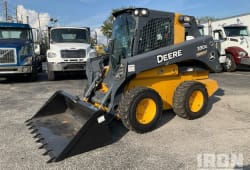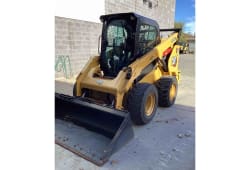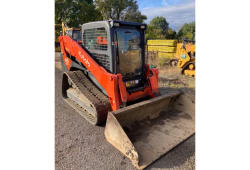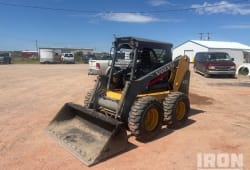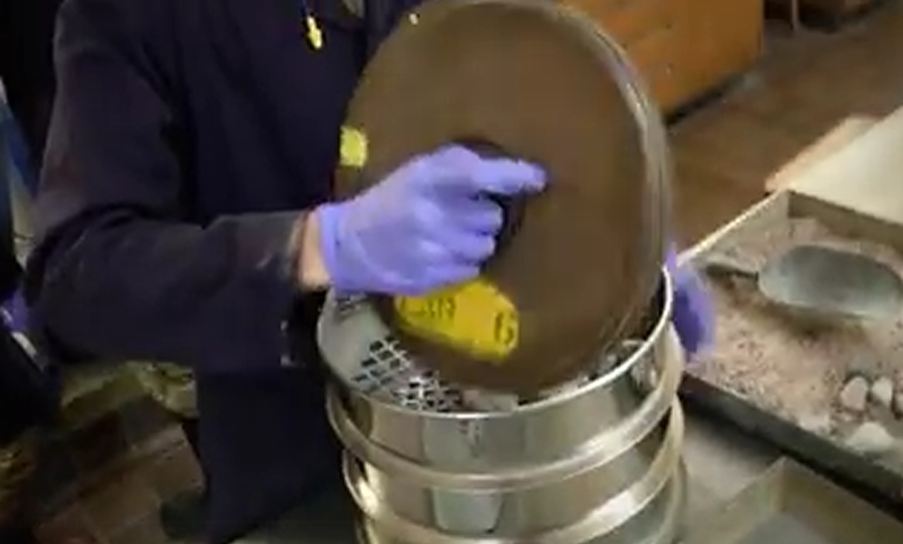How Much Does a Skid Steer Weigh?
8 Min read
)
March 9, 2022
The taking walks weight of a skid steer (additionally called a skid steer loader, skid loader, or "SSL") ought to possibly amaze you. Common sense should endorse the bigger the skid steer, the heavier the skid steer; however, that is not always the case.
Compare a compact music loader with the 331G John Deere skid steer to massive body skid steers; just like the 2018 Gehl V420, this is the most crucial skid steer on the market. The heaviest skid steer in this example is the more minor John Deere skid steer at the identical time because the marketplace dominator is the lightest skid steer right here. These Gehl V420 skid steer loaders weigh 11,665 pounds simultaneously because the compact John Deere skid steer weighs a tremendous 11,900-pound walking weight.
Generally speaking, the standard weight of a skid steer loader is ready at 7,500 pounds. The most unusual skid steers weigh about just like a flatbed truck.
Operating Weight v. Operating Capacity
Before diving into the records, it is essential to distinguish between the device's rated running weight and its rated strolling capability.
The rated working weight of a skid steer loader is the amount the construction tool weighs when in use. This typically takes into consideration numerous factors that add more weight, such as the person jogging the skid steer, its fuel, and unique attachments.
The rated operating capacity is the number of kilos the loader palms can lift to their fullest pinnacle while running the skid steer thoroughly. Some oldsters check with this metric because the skid steers bring capability or tipping load.
Now that you recognize the difference between the going-for-walks weight and rated running capability, we can begin to explain why skid steer weights are taken into account.
:format(webp)) Why is the Operating Weight of a Skid Steer Loader Important?
Why is the Operating Weight of a Skid Steer Loader Important?
If you're asking, "How does a lousy lot want a skid steer weigh?" You're asking the wrong question. The most fulfilling working weight and the precise jobs your group tackles are specific to you.
The bigger and heavier the device, the greater power it wields. Sounds splendid, proper? Not usually.
Before leaping right in the path of the maximum essential, worst tool available, take some time to consider the following:
How will you get it onto your method websites?
How maneuverable does it want to be to get the job done within the constraints of your non-unusual introduction net website?
Where will you save the gadget while the project is complete?
Would a small-body skid steer with a higher-rated jogging ability (ROC) be a better preference?
As you can see, skid steer weight should have a massive effect on task glide from start to finish. Once you have an elegant idea of your chosen running weight and lift capability, you may browse the alternatives for the proper duration skid steer.
Ultimately, the weight of a skid steer is primarily based on the precise make and model, in addition to the attachments that you plan to use on each machine. As we mentioned at the beginning, do not be fooled into thinking that mini skid steers cannot outweigh the massive dogs or carry heavy masses.
Skid Steer Weight v. Counterweight
Skid steers -- even mini skid steers -- don't carry out like your standard car. The reason skid steers weigh masses is because of the reality they incorporate a counterweight. The counterweight increases the rated going-for-walks capability simply so the loader arms can deal with greater weight before the system hits its tipping load.
With an empty popular bucket attachment, the gadget's weight may be disbursed 70% rearward and 30% in advance, no matter when the skid steers. As you fill the bucket, the weight stays lightly allotted so every set of wheels has an identical quantity of traction. A heavy rear stop makes a skid steer loader less complicated to counter-rotate and limits the tool's ability to climb steep slopes.
:format(webp)) Skid Steer Loader Attachments
Skid Steer Loader Attachments
Despite being heavy gadgets, these business enterprise automobiles are impressively versatile due to their capability to exchange a unique attachment for diverse responsibilities. It makes skid steer loaders a famous preference for lots of production fleets.
To decide which attachment is first-class suitable for your gadget, consider the painting environment, the materials used, and the task net page logistics. Here are some splendid standard skid steer attachments to increase your fleet's versatility and the weights you may anticipate them to feature for your tool.
:format(webp)) Frequently Used Attachments:
Frequently Used Attachments:
Pallet Forks - Add approximately 390 pounds
Drill Bit Augers - Add approximately 230 pounds
Grapple Buckets - Add approximately 700 pounds
Brush Cutters - Add approximately 2,000 pounds
Box Blades - Add approximately 1,000 pounds
Landscape Tillers - Add approximately 900 pounds
Brooms - Add approximately 1,000 pounds
The length and weight of the skid steer loader extensions will be difficult, considering the 4 concerns we ran through above to pick the proper tool concerning transportation and garage, hobby website online logistics, and frame length in location of running capacity.
Now, we are capable of looking at the most popular skid steers in the marketplace—the producers that win out for maximum profit after doing the intellectual math referred to above.
Popular Manufacturers
A few names have built popularity for making the best skid steer loader.
Caterpillar:
The Cat SSL is known for its ability to perform complex duties. Cat's long-lasting and dependable equipment makes it a worthwhile long-term investment. One frequently purchased option is the 2022 Cat 226D3 skid. This famous Caterpillar version boasts a 5849-pound strolling weight blended with a 1550-pound rated running functionality.
:format(webp)) John Deere:
John Deere:
Like Caterpillar, you may not be surprised to discover the John Deere skid steer in this listing. John Deer produces prolonged-lasting machines with over a hundred to-be-had skid steer attachments. This brand, which typically dubs the machines "compact music loaders," is understood for generating first-rate, small-however-powerful models. One such John Deere skid steer is the 2017 John Deere 316GR.
:format(webp)) Bobcat:
Bobcat:
Last but not least, Bobcat is a company chief in the production of skid steers. In truth, Bobcat invented the sector's first skid steer in 1960. In the game-converting system's 60-three hundred and sixty-five days tenure, it has advanced more than two hundred Bobcat attachments for some immoderate adaptability. One excessive-performing model has taken the lead as one of the market's best-selling SSLs year after year: the Bobcat S650.
While those 3 will be inclined to be the go-to for this specific machine, many great producers provide strong quantities of tools. Takeuchi, Case, Wacker Neuson, and Kubota are also worth considering.
:format(webp)) Common Uses of Skid Steers
Common Uses of Skid Steers
Skid steers are considerably green, multitalented portions of the tool. They can be used for manufacturing, landscaping, excavating, trenching, digging, agriculture, forestry, clearing snow, hauling, and many more.
Skid steers get their call because the front tires are constant to the rear tires on every element (in evaluation to your enormous front-wheel strength or rear-wheel pressure), which creates a skidding motion due to the fact the gadget rotates to carry out the venture reachable. Combined with this maneuverability, skid steers can perform the feature of several, certainly one-of-a-kind machines in an unmarried piece of the device, thanks to their extensive range of attachments.
:format(webp)) Here's a table summarizing the weights of various skid steer models and some common
Here's a table summarizing the weights of various skid steer models and some common
:format(webp))
Common Skid Steer Attachments and their Weight Addition:
:format(webp))
Note: Some skid steer models and their weights were no longer specified in the supplied article. Also, the weights of attachments can vary depending on the precise model and producer.
Key Takeaways:
Versatility
The skid steer is a sound, adaptable system that makes them the Swiss Army Knife of construction system.
Weights
In choosing the great SSL, remember how much it needs to weigh for your desires. Ask yourself how you propose transporting the tool amongst artwork internet sites, which you may save amongst gigs and the maneuverability logistics of your common introduction site. Don't forget approximately to assess the rated jogging functionality (ROC) and the weight of going for walks. An immoderate-rated strolling ability can be located in a small body skid that is easier to move and shop.
Brands
Bobcat, John Deere, and Caterpillar are expert manufacturers, with Bobcat being its proper innovator.
Overall
Understanding the load of the skid steer and the burden of any attachments, you endorse will help to extend the lifespan of your tool and ensure that it meets all protection necessities.
:format(webp))
